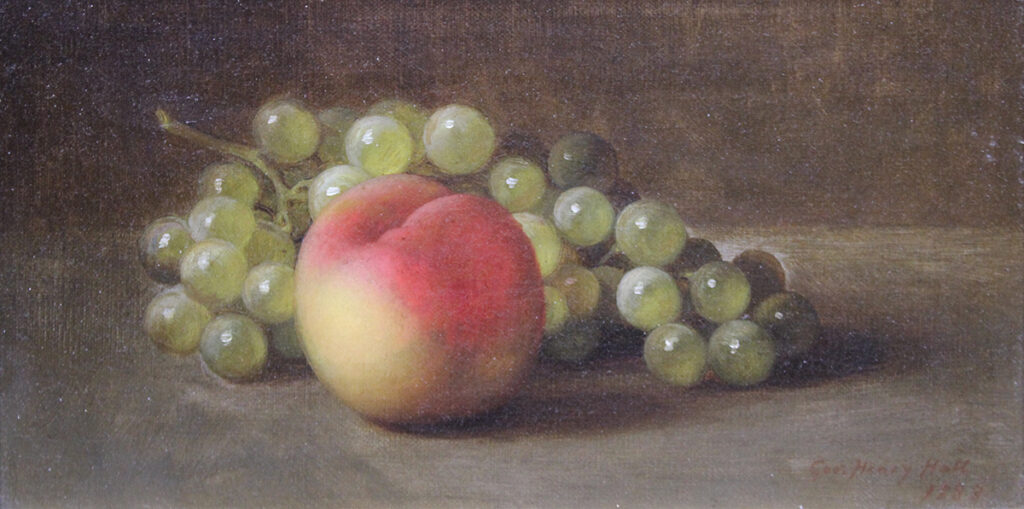GEORGE HENRY HALL
1825-1913George Henry Hall was born in Manchester, New Hampshire on September 21, 1825. His father moved the family to Boston when the son was four years old. He began his career as an artist at the age of 16. In 1849 he traveled with his friend Eastman Johnson to Düsseldorf, Germany. Hall studied at the Königliche Akademie for about a year, and continued his studies for two more years in Paris, and, in Rome, where he opened a studio. In 1852 he returned to the United States and settled in New York City. However, he remained an enthusiastic traveler and spent a total of more than 20 years abroad. During this span Hall visited Spain several times, and spent a year studying in Egypt.
He was elected an associate in 1853, and in 1868 a member, of the prestigious National Academy of Design. He was also a member of the Century Association, a prominent social club for men in New York City. They held annual exhibitions and built a large collection. He exhibited at the Pennsylvania Academy of Fine Arts 1853-1968, the Royal Academy, British Institute, Suffolk Street Gallery, all in London, England 1858-1874, the Brooklyn Art Association 1861-1881, the National Academy of Design 1862-1900, the Art Institute of Chicago 1888, and the Boston Art Club 1881,1889.
Hall was one of the best-known still-life painters of the mid-19th century. In about 1857, he began painting fruit and flower still lifes. He was much admired and financially successful in his day, as mentioned in the famous “Book Of The Artist” by Henry R. Tuckerman, published in 1867. The author was impresssed that Hall received $12,000 for an auction of 75 small paintings in 1865.
Halls’s fruit and flowers emphasized the rich abundance of nature and demonstrated scientific knowledge of his subject matter. The technique and precision of his paintings were greatly admired. A critic writing for The Independent said, “His still life pictures are his best, and in the really picturesque delineation of fruit and flowers he has few superiors in the country…”. Although the table-top setting was a common in his work, his preference for placing his still lifes in a natural setting is indicative of his devotion to the aesthetic philosophy of John Ruskin. His work of the 1860s has affinities with the highly detailed, naturalistic imagery of the American Pre-Raphaelites, though by 1868 he was concentrating on figure painting and Spanish and Italian themes.
The subject-matter of his figure paintings was often inspired by the Mediterranean locations he favored. His art was distinguished by a dark color range and a highly polished finish and reflected his love of Venetian painting. After 1870 Hall exhibited regularly at the National Academy of Design, New York.
Hall’s work is represented in the Abby A Rockefeller Folk Art Museum, the Chrysler Museum of Art, the Georgia Museum of Art, the High Museum of Art, the Boston Museum of Fine Arts, the Smithsonian American Art Museum, the Brooklyn Museum of Art, St. Johnsbury Anthenaeum, the John H. Vanderpoel Art Association, the Worcester Art Museum and the Metropolitan Museum of Art.
George Henry Hall died in New York City on February 17, 1913.
GEORGE HENRY HALL
Artworks for Sale
 GEORGE HENRY HALL
GEORGE HENRY HALLStill Life with Peach and Grapes, 1883
Oil
5 3/8 x 10 ½ inches ; Framed: 13 ½ x 18 ½ inches
Click here for more information
